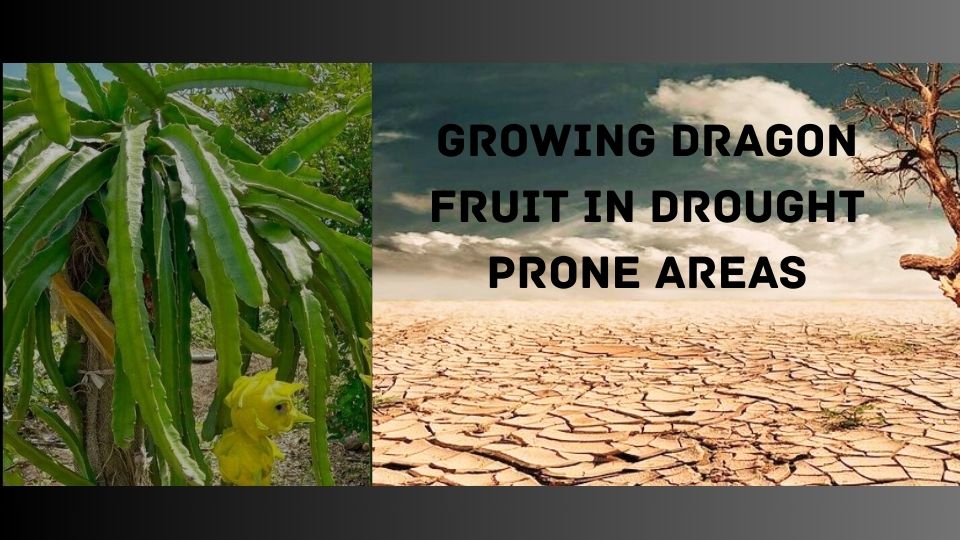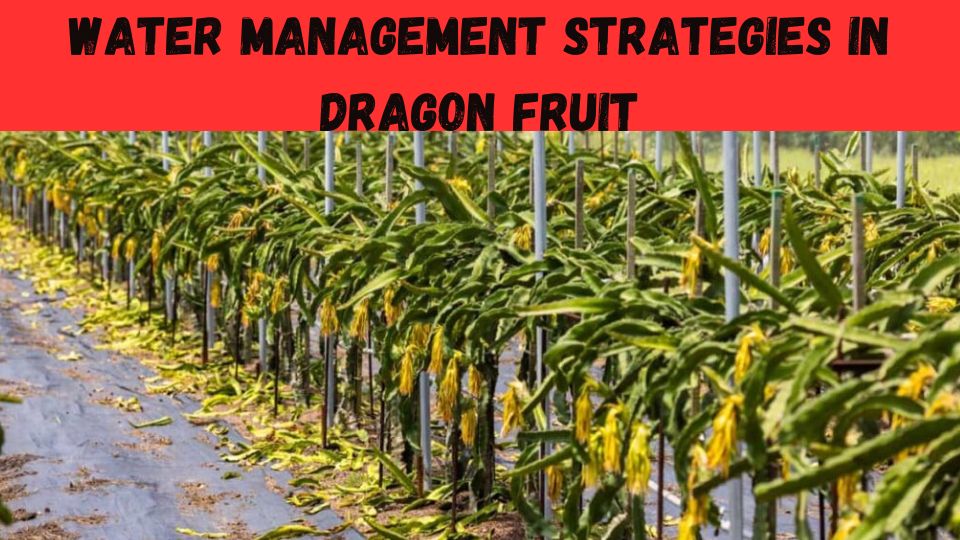In this comprehensive guide, we explore the strategies and techniques to successfully grow dragon fruit in drought-prone areas, ensuring both agricultural resilience and economic viability. In the face of escalating concerns over water scarcity and climate change, the cultivation of drought-tolerant crops has become imperative for agricultural sustainability. Among these resilient crops, dragon fruit stands out as a promising candidate for cultivation in drought-prone areas. Renowned for its hardiness and adaptability, dragon fruit offers a viable solution for farmers grappling with water shortages and erratic rainfall patterns.
Table of Contents

Understanding Dragon Fruit In Drought-Prone Areas
Before delving into the nuances of dragon fruit cultivation in drought-prone areas, it’s essential to grasp the fundamentals of this unique fruit. Also known as pitaya, dragon fruit belongs to the cactus family and is native to arid and semiarid regions of Central and South America. Its succulent, vine-like stems, adorned with strikingly colorful fruits, make it an intriguing and visually appealing crop. Despite its tropical origins, dragon fruit exhibits remarkable tolerance to drought and thrives in regions characterized by limited water availability.
Adaptable Varieties of Dragon Fruit
One of the key factors enabling the cultivation of dragon fruit in drought-prone areas is the availability of adaptable varieties. Certain cultivars of dragon fruit have been bred or selected for their drought tolerance and resilience to arid conditions. These varieties typically exhibit traits such as deep root systems, efficient water use efficiency, and the ability to withstand periods of water stress without compromising yield or fruit quality. By selecting suitable varieties tailored to the specific environmental conditions of drought-prone areas, farmers can maximize the success of their dragon fruit cultivation endeavors.

Optimal Site Selection
Site selection plays a crucial role in the success of dragon fruit cultivation, particularly in drought-prone areas. When choosing a site for dragon fruit orchards, several factors should be taken into consideration:
- Soil Type: Dragon fruit thrives in well-drained, sandy or sandy loam soils that allow excess water to percolate freely. Soil with good drainage helps prevent waterlogging, which can be detrimental to the roots of dragon fruit plants, especially in drought-prone areas where rainfall is sporadic.
- Sun Exposure: Dragon fruit is a sun-loving plant that requires ample sunlight for optimal growth and fruit production. When selecting a site for dragon fruit cultivation in drought-prone areas, prioritize locations with full sun exposure to ensure maximum photosynthesis and energy production.
- Microclimate Considerations: In drought-prone areas, microclimatic factors such as temperature fluctuations, wind exposure, and humidity levels can significantly impact dragon fruit cultivation. Choose sites that offer protection from strong winds and extreme temperatures, as well as adequate airflow to prevent fungal diseases.

Water Management Strategies
Effective water management is paramount for dragon fruit cultivation in drought-prone areas. Implementing water-saving techniques and irrigation strategies can help conserve water resources while sustaining healthy dragon fruit orchards:
- Drip Irrigation: Drip irrigation systems deliver water directly to the roots of dragon fruit plants, minimizing water wastage through evaporation and runoff. By applying water precisely where it’s needed, drip irrigation maximizes water use efficiency and reduces the overall water footprint of dragon fruit cultivation.
- Mulching: Mulching the soil around dragon fruit plants helps retain soil moisture, suppress weed growth, and regulate soil temperature. Organic mulches such as straw, wood chips, or compost can enhance soil structure and water retention capacity, reducing the frequency of irrigation in drought-prone areas.
- Water Harvesting: In regions with limited rainfall, rainwater harvesting can supplement irrigation water for dragon fruit cultivation. Installing rainwater collection systems, such as rooftop catchment tanks or surface reservoirs, allows farmers to capture and store rainwater during wet periods for use during dry spells.
- Soil Moisture Monitoring: Regular monitoring of soil moisture levels is essential for optimizing irrigation scheduling and preventing water stress in dragon fruit plants. Utilize soil moisture sensors or manual probing techniques to assess soil moisture status and adjust irrigation practices accordingly.

Cultural Practices for Drought Resilience
In addition to water management strategies, cultural practices can enhance the drought resilience of dragon fruit plants and promote healthy growth:
- Pruning and Thinning: Pruning excess growth and thinning overcrowded stems can improve air circulation, reduce water competition among plants, and enhance light penetration in drought-prone areas. This helps optimize resource allocation and mitigate stress on dragon fruit plants during periods of water scarcity.
- Nutrient Management: Proper fertilization is essential for maintaining the health and vigour of dragon fruit plants in drought-prone areas. Apply balanced fertilizers with essential nutrients such as nitrogen, phosphorus, and potassium to support robust growth, flowering, and fruit development. Avoid excessive fertilization, which can lead to nutrient imbalances and water stress.
- Pest and Disease Control: Pests and diseases can exacerbate water stress in dragon fruit plants, compromising their resilience and productivity. Implement integrated pest management (IPM) practices to monitor and control common pests such as scale insects, mealybugs, and fruit borers. Additionally, adopt cultural practices such as proper sanitation, weed control, and disease-resistant varieties to minimize the risk of pest and disease outbreaks.
Conclusion
In conclusion, growing dragon fruit in drought-prone areas is not only feasible but also offers a sustainable and economically viable option for agricultural diversification. By leveraging adaptable varieties, optimal site selection, water management strategies, and cultural practices tailored to drought resilience, farmers can cultivate dragon fruit with confidence, even in regions with limited water resources. With careful planning, resource stewardship, and innovative solutions, dragon fruit farming holds promise as a resilient and profitable venture in the face of water scarcity and climate variability.
